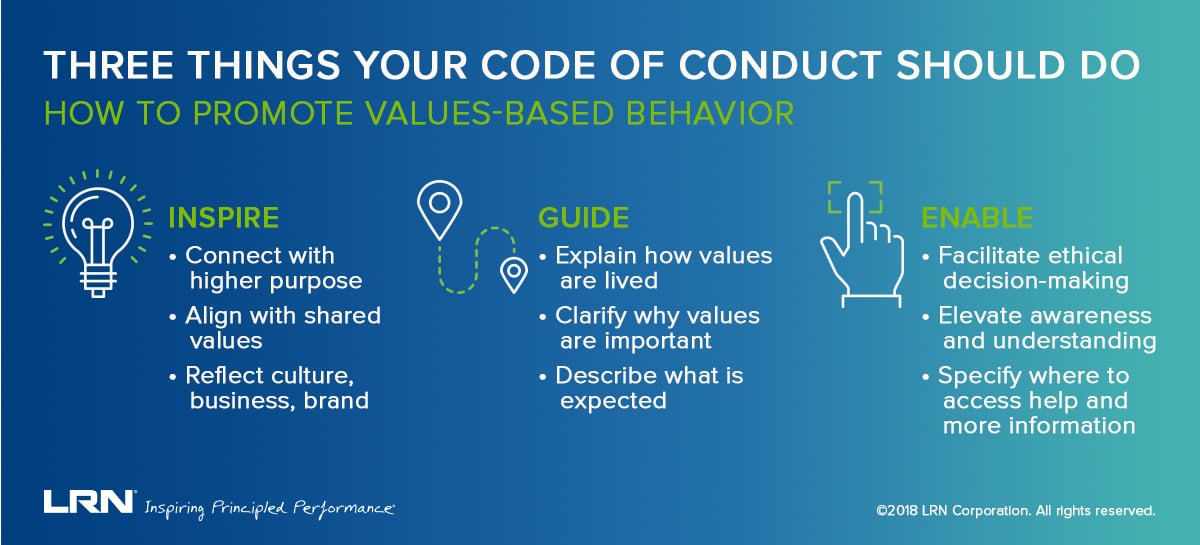You’re getting ready to re-do your company’s Code of Conduct. You know it needs to be updated. You know it needs to look “fresh” and “engaging.” You know how you want your Code to look, but what do you want it to do?
When the Fraud Section of the U.S. Department of Justice published its guidance on the Evaluation of Corporate Compliance Programs in February of 2017, the focus was on the impact the compliance program was having and not so much on the elements it contained. Many organizations that have made headlines for corporate scandals had all the right elements in place and yet, illegal and unethical behavior persisted. The question now is not so much what your program should consist of, but rather what should it do? The same question applies to Codes of Conduct.
The purpose of a Code of Conduct is to affect behavior – to reinforce good behavior and discourage bad behavior. But HOW do we do that? Three words answer that question – inspire, guide, and enable.
Three Things Your Code of Conduct Should Do

- Your Code of Conduct should inspire your colleagues to want to do the right thing. One of the most effective ways todo this is to link your Code to your organization’s purpose and shared values--not necessarily the purpose that is written down, but your higher purpose. In other words, what is your organization doing to make the world a better place, and how you are enriching people’s lives? Incorporate images and stories in your Code that make your colleagues feel proud to come to work. They should be able to show the Code to their families and friends and proudly state: “This is where I work!”
- Your Code should guide your colleagues by explaining how your organization’s values act as touchstones for achieving your purpose in a principled, ethical manner. Ethics and compliance requirements should be described in terms of desired behaviors. Explain not only WHAT you want employees to do, but also WHY it’s important to the business, and HOW employees are expected to behave. People are more open to receiving guidance when they understand the full context of what it means and why it’s important.
- Finally, your Code of Conduct should enable your colleagues to identify ethics and compliance risks, understand the controls in place to manage those risks, and make them feel comfortable raising concerns and asking questions. Ethics and compliance is not the responsibility of one person or one department -- but the responsibility of everyone. Doing the right thing is not an impediment to the business. Rather, it is an enabler of the business.
Figuring out how you want your Code of Conduct to look is one of the key steps in the journey toward a more effective Code, but it is not the first step. Your journey should begin by determining what you want your Code to do. A Code that inspires employees to do the right thing, guides them through principled behaviors, and enables them to be ethical leaders is a good place to start.
To learn more about code of conduct best practices, read our white paper “Bring Your Code To Life: Best Practices for an Effective Code of Conduct.”
